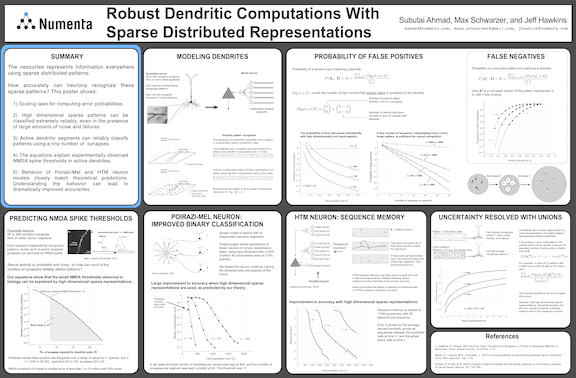Sparse distributed representations are the fundamental form of information representation in the brain. The neocortex represents information everywhere using sparse distributed representations.
This poster examines how accurately neurons can recognize these sparse patterns by showing:
- Scaling laws for computing error probabilities.
- High dimensional sparse patterns can be classified extremely reliably, even in the presence of large amounts of noise and failures.
- Active dendritic segments can reliably classify patterns using a tiny number of synapses.
- The equations explain experimentally observed NMDA spike thresholds in active dendrites.
- Behavior of Poirazi-Mel and HTM neuron models closely match theoretical predictions. Understanding the behavior can lead to dramatically improved accuracies

